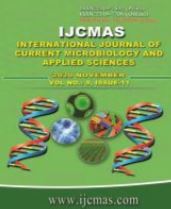


 National Academy of Agricultural Sciences (NAAS)
National Academy of Agricultural Sciences (NAAS)

|
PRINT ISSN : 2319-7692
Online ISSN : 2319-7706 Issues : 12 per year Publisher : Excellent Publishers Email : editorijcmas@gmail.com / submit@ijcmas.com Editor-in-chief: Dr.M.Prakash Index Copernicus ICV 2018: 95.39 NAAS RATING 2020: 5.38 |
Bees execute a special performance by pollinating several plant species. But the activity of honeybees depends on the bee flora availability and quantity and quality of nectar, pollen present in them. In the present study University of agricultural Sciences, Dharwad campus were surveyed to asses the diversity of bees’ flora from July 2019- March 2020 which is covered with Agro- horticultural crops, wild plants and trees. Total 93 plants were considered as a bee flora, out of which 17 were field crops, 16 were horticultural crops, 33 were ornamental plants, 10 were trees and 17 were weeds. These bee flora available in different months supplying pollen, nectar and some both. Among the recorded bee flora, nectar and pollen yielding plants were more followed by nectar yielding and pollen yielding. It was also noticed that March month recorded with highest abundance of bee flora of 45.16 per cent recording 33 plant species.
 |
 |
 |
 |
 |